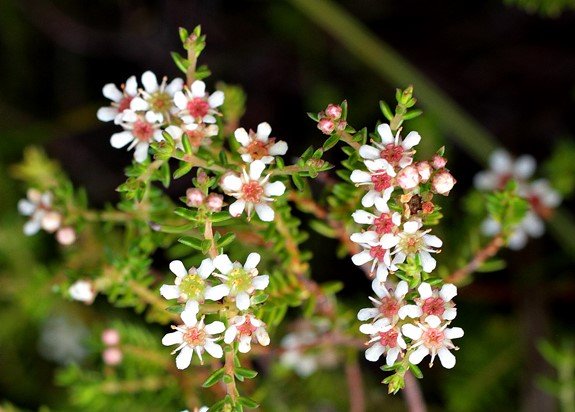Diosma oppositifolia

Author: Ivan Lätti
Photographer: MC Botha
Diosma oppositifolia, commonly in Afrikaans bitterboegoe (bitter buchu) and previously scientifically D. succulenta, is a multistemmed, aromatic shrublet or shrub growing from a woody rootstock to heights from 15 cm to 1 m.
The simple, opposite leaves are nearly needle-like to lance-shaped, slightly concave on top with recurving tips and entire margins. Leaf dimensions are from 5 mm to 10 mm long and 1,5 mm wide, longer on the growth after fire.
The stalkless, white flowers grow in small, stem-tip clusters. There are five sepals in each flower and five spreading, pointed or rounded petals facing up and spreading star-like.
Five diverging stamens alternate with the petals, glands present on their anthers. There are no staminodes. The knob-tipped styles become erect later in flowering. The five-carpelled ovaries are positioned on the nectar discs, in picture initially fleshy and pale green, maturing to red purple.
Flowering happens from before midwinter to after midsummer.
The species distribution is in the far southwest of the Western Cape, from the Cape Peninsula to Malmesbury and Bredasdorp. The photo was taken at Varksnoet east of Hermanus.
The habitat is rocky fynbos on lower slopes. The species is not considered threatened in habitat early in the twenty first century (Manning, 2007; Bean and Johns, 2005; Bond and Goldblatt, 1984; iNaturalist; http://redlist.sanbi.org).

